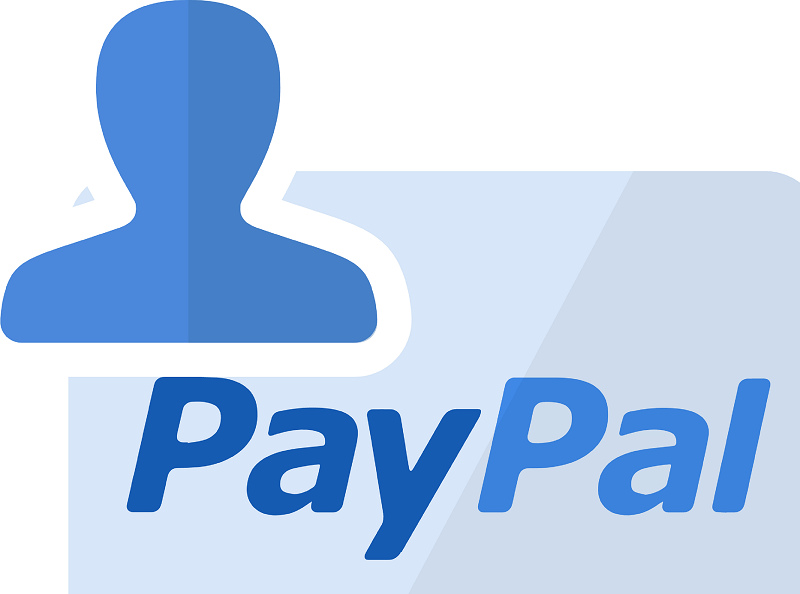Set up PayPal Passkey – How it works
PayPal Passkey is a function that works similar to the Google Passkey process and with which you can make your PayPal payments even more secure. This is an additional security measure used in conjunction with your PayPal password to ensure that only you can access your PayPal account. To activate PayPal Passkey, you must first ensure that you have created a strong password for your PayPal account. You can then activate the passkey under the settings in your PayPal account.

The passkey works similar to an additional password that you must use with every transaction. This ensures that only you can access your PayPal account and that no one else can access your payments even if your password is leaked It is important to note that you should not forget your passkey as you will need it for every transaction. If you have forgotten your passkey, you can reset it from the settings in your PayPal account. In the following we explain the individual steps how to get your PayPal Passkey and how to use it.
Important: The PayPal Passkey has been available in the US since October 2022 with the Chrome browser on an Android smartphone with at least Android 9.0. The function should also be available in other countries in the course of 2023.
Set up PayPal Passkey – How it works
PayPal Passkey is a function that works similar to the Google Passkey process and with which you can make your PayPal payments even more secure. This is an additional security measure used in conjunction with your PayPal password to ensure that only you can access your PayPal account. To activate PayPal Passkey, you must first ensure that you have created a strong password for your PayPal account. You can then activate the passkey under the settings in your PayPal account.

The passkey works similar to an additional password that you must use with every transaction. This ensures that only you can access your PayPal account and that no one else can access your payments even if your password is leaked It is important to note that you should not forget your passkey as you will need it for every transaction. If you have forgotten your passkey, you can reset it from the settings in your PayPal account. In the following we explain the individual steps how to get your PayPal Passkey and how to use it.
Important: The PayPal Passkey has been available in the US since October 2022 with the Chrome browser on an Android smartphone with at least Android 9.0. The function should also be available in other countries in the course of 2023.
Set up PayPal Passkey
Set up PayPal Passkey
Several of the world’s leading companies, including Microsoft, Apple, Google, Visa, Mastercard, Amazon, Samsung and PayPal, have come together to form the FIDO Alliance with the aim of making online logins more secure. To do this, they have developed a more secure login process that is intended to serve as an alternative to passwords. This method is called Passkey and, unlike other login methods, does not require an authentication app.
Passkeys are encrypted key pairs that are automatically generated during account registration and are used in place of passwords. The public key is stored on the provider’s server, while the private key is made available to the user. When the user wants to log into a service, the website or app sends a request for the private key. The user then receives a confirmation request on their device, for example their smartphone, which they have to confirm with a fingerprint, PIN or Face ID.
To set up PayPal Passkey, you must first ensure that you have created a secure password for your PayPal account. If you haven’t already done so, you should update your PayPal password first.
To set up the PayPal Passkey, proceed as follows:
- Sign in to your PayPal account.
- Click on the gear icon in the top right corner of the screen to enter Settings.
- Click “Security” in the left sidebar.
- Locate the PayPal Passkey section and click Edit.
- Enable the option “Use PayPal Passkey“.
- Enter a password that consists of at least 8 characters and contains letters, numbers and special characters. This password should be different from your PayPal password.
- Click “Continue” and enter your PayPal password to confirm the changes.
- Enter the 6-digit security code that PayPal sends to your mobile phone number to verify your identity.
- After confirmation, PayPal Passkey is activated and you need to enter it in every transaction.
It is important to note that you should not forget your passkey as you will need it for every transaction. If you have forgotten your passkey, you can reset it from the settings in your PayPal account.
Important: The PayPal Passkey has been available in the US since October 2022 with the Chrome browser on an Android smartphone with at least Android 9.0. A passkey for a personal PayPal account can be created there. Having the device with the passkey at hand eliminates the need for a password to log in. However, it is still possible to log in with a password. The function should also be available in other countries in the course of 2023.
Several of the world’s leading companies, including Microsoft, Apple, Google, Visa, Mastercard, Amazon, Samsung and PayPal, have come together to form the FIDO Alliance with the aim of making online logins more secure. To do this, they have developed a more secure login process that is intended to serve as an alternative to passwords. This method is called Passkey and, unlike other login methods, does not require an authentication app.
Passkeys are encrypted key pairs that are automatically generated during account registration and are used in place of passwords. The public key is stored on the provider’s server, while the private key is made available to the user. When the user wants to log into a service, the website or app sends a request for the private key. The user then receives a confirmation request on their device, for example their smartphone, which they have to confirm with a fingerprint, PIN or Face ID.
To set up PayPal Passkey, you must first ensure that you have created a secure password for your PayPal account. If you haven’t already done so, you should update your PayPal password first.
To set up the PayPal Passkey, proceed as follows:
- Sign in to your PayPal account.
- Click on the gear icon in the top right corner of the screen to enter Settings.
- Click “Security” in the left sidebar.
- Locate the PayPal Passkey section and click Edit.
- Enable the option “Use PayPal Passkey“.
- Enter a password that consists of at least 8 characters and contains letters, numbers and special characters. This password should be different from your PayPal password.
- Click “Continue” and enter your PayPal password to confirm the changes.
- Enter the 6-digit security code that PayPal sends to your mobile phone number to verify your identity.
- After confirmation, PayPal Passkey is activated and you need to enter it in every transaction.
It is important to note that you should not forget your passkey as you will need it for every transaction. If you have forgotten your passkey, you can reset it from the settings in your PayPal account.
Important: The PayPal Passkey has been available in the US since October 2022 with the Chrome browser on an Android smartphone with at least Android 9.0. A passkey for a personal PayPal account can be created there. Having the device with the passkey at hand eliminates the need for a password to log in. However, it is still possible to log in with a password. The function should also be available in other countries in the course of 2023.
Popular Posts:
Career booster 2026: These Microsoft Office skills will take you further!
A new year, new career opportunities! But which Office skills will really be in demand in 2026? "Skilled use" is no longer enough. We'll show you today's must-haves – like advanced Excel, using AI in the office, and relevant certifications for your resume.
Why Zero Trust doesn’t work without identity protection!
Zero Trust means: Trust no one, verify everyone. Identity protection is at the heart of this modern security model. Learn how IAM, MFA, Conditional Access, and the principle of least privilege effectively protect your business when the old network perimeter is gone.
How AI fuels cyberattacks – and how it protects us from them
Cybercriminals are using AI for deepfakes and automated attacks. Defenses are also relying on AI: through behavioral analysis (UEBA) and automated responses (SOAR). Learn how this arms race works and how modern security strategies can protect your business.
Information overload: Protection & tips against digital stress
Constantly online, overwhelmed by news, emails & social media? Digital information overload leads to stress and concentration problems. Learn the best strategies and practical tips to effectively protect yourself, manage the chaos, and regain your focus.
Put an end to password chaos: Why a password manager is important
Passwords are constantly being stolen through data leaks. A password manager is your digital vault. It creates and stores strong, unique passwords for every service. This effectively protects you against identity theft through "credential stuffing".
Stop procrastinating: How distraction blockers can help you regain focus
Constant digital distractions kill your productivity. Distraction blockers like Forest or Freedom help you regain focus. They specifically block distractions on your PC and mobile phone and use techniques like the Pomodoro Technique. This helps you stop procrastinating.
Popular Posts:
Career booster 2026: These Microsoft Office skills will take you further!
A new year, new career opportunities! But which Office skills will really be in demand in 2026? "Skilled use" is no longer enough. We'll show you today's must-haves – like advanced Excel, using AI in the office, and relevant certifications for your resume.
Why Zero Trust doesn’t work without identity protection!
Zero Trust means: Trust no one, verify everyone. Identity protection is at the heart of this modern security model. Learn how IAM, MFA, Conditional Access, and the principle of least privilege effectively protect your business when the old network perimeter is gone.
How AI fuels cyberattacks – and how it protects us from them
Cybercriminals are using AI for deepfakes and automated attacks. Defenses are also relying on AI: through behavioral analysis (UEBA) and automated responses (SOAR). Learn how this arms race works and how modern security strategies can protect your business.
Information overload: Protection & tips against digital stress
Constantly online, overwhelmed by news, emails & social media? Digital information overload leads to stress and concentration problems. Learn the best strategies and practical tips to effectively protect yourself, manage the chaos, and regain your focus.
Put an end to password chaos: Why a password manager is important
Passwords are constantly being stolen through data leaks. A password manager is your digital vault. It creates and stores strong, unique passwords for every service. This effectively protects you against identity theft through "credential stuffing".
Stop procrastinating: How distraction blockers can help you regain focus
Constant digital distractions kill your productivity. Distraction blockers like Forest or Freedom help you regain focus. They specifically block distractions on your PC and mobile phone and use techniques like the Pomodoro Technique. This helps you stop procrastinating.

































